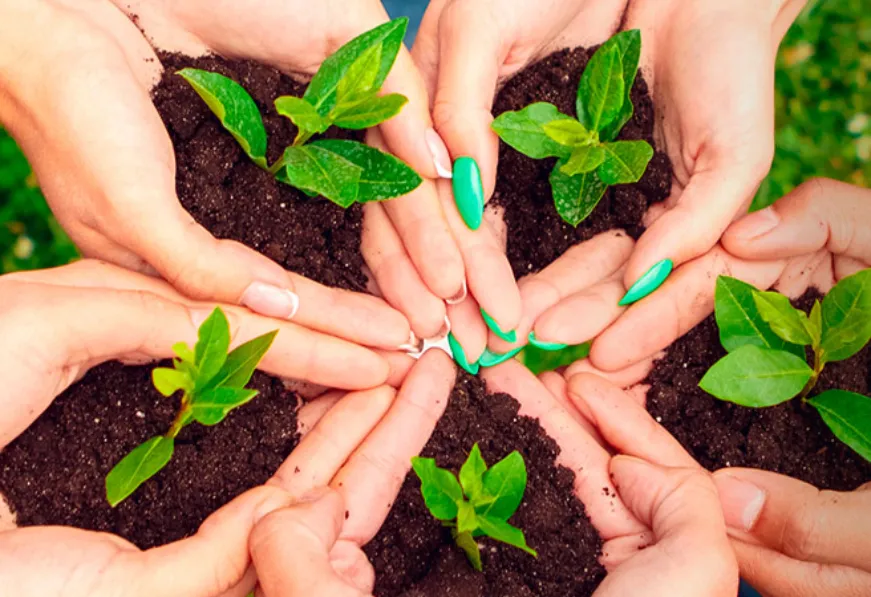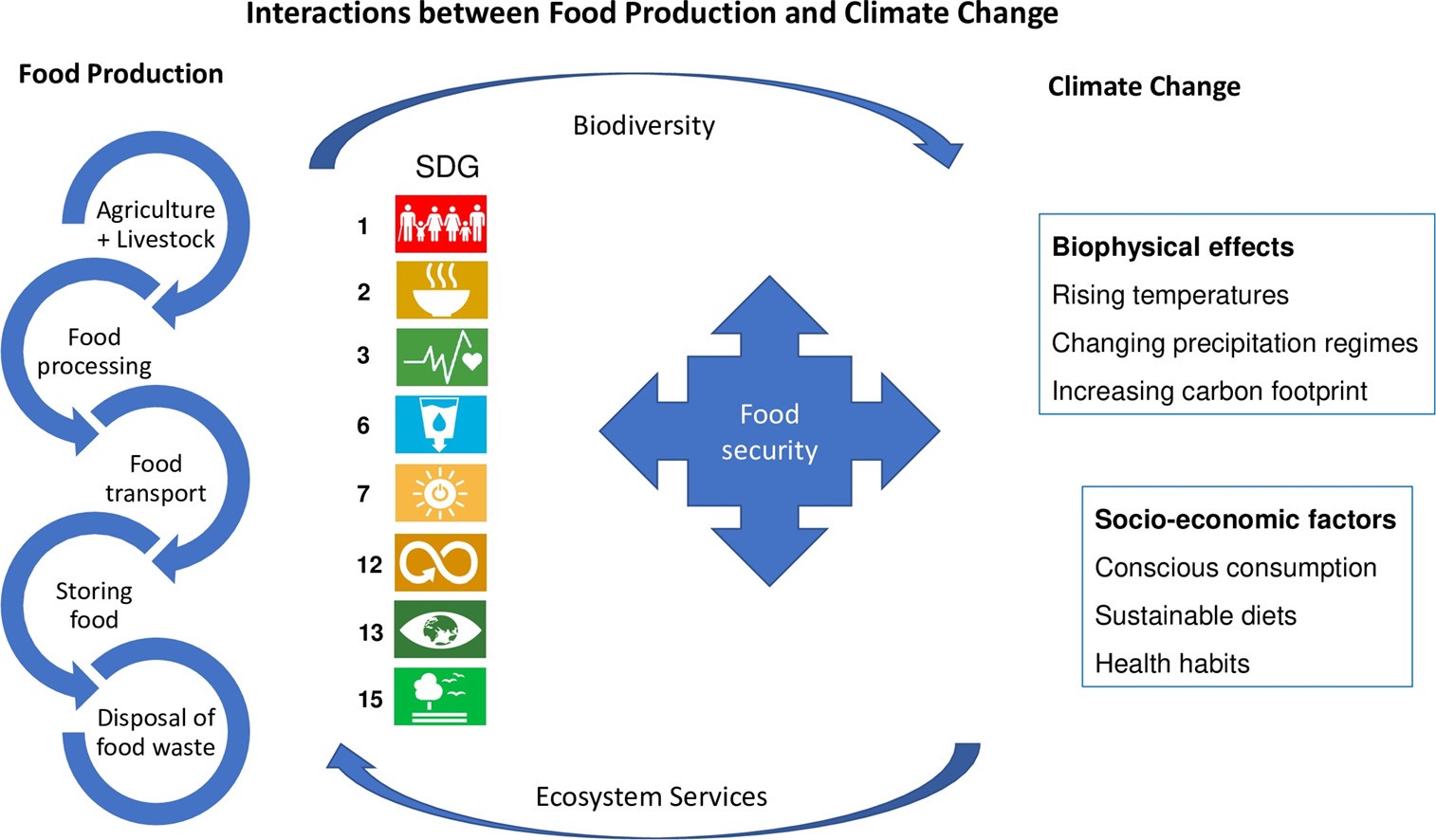
Pursuing sustainable food systems has become imperative amidst the dual challenges of climate change and surging global food demand. Climate change's far-reaching impacts, from altered weather patterns to increased climate-related disasters, pose significant threats to global food security. Simultaneously, the world's population is steadily growing, necessitating an expansion in food production. However, conventional agricultural practices often contribute to environmental degradation, further exacerbating the climate crisis.
[pullquote]Climate change's far-reaching impacts, from altered weather patterns to increased climate-related disasters, pose significant threats to global food security.[/pullquote]
Agriculture in the Global South has largely been unsustainable, which has resulted in a decrease in organic yield in the soil. The increasing demand for food to satisfy global hunger has led to land-use changes, the exploitation of land, the use of unsustainable fertilisers, and the production of genetically modified crops, all of which have had negative impacts on the environment and the natural ecosystem. This has led to an increase in greenhouse gas emissions (GHGe), environmental pollution, biodiversity degradation, deterioration of soil quality, and destruction of the natural capital amongst other negative effects.
In 2020, the number of people suffering from hunger ranged from 720 million to 811 million. After barely changing between 2014 and 2019, the rate of undernutrition rose to about 9.9 percent in 2020, compared to 8.4 percent in the previous year. Being the world’s fast-growing population and the increasing demand for food have led to the excessive use of pesticides and fertilisers to increase the production of livestock and crops. More than 50 percent of the world’s crops are lost to pests, weeds, and diseases when chemical pesticides and other crop protection measures are not in place. Since the yield per acre of crops is expected to decrease rapidly, the amount of land needed for the cultivation of crops is likely to increase. Species habitats and natural ecosystems would suffer, and erosion would likely lead to soil depletion and degradation of soil quality. The use of agrochemicals carries serious risks for ecosystems and human health. The chemical contamination alters the biochemical composition of food and can lead to diarrhoea, cancer, neurological ailments, reproductive system alterations, developmental problems, respiratory harm, and more.
[pullquote]Species habitats and natural ecosystems would suffer, and erosion would likely lead to soil depletion and degradation of soil quality.[/pullquote]
The effects of climate change on food safety are equally significant, both in terms of biotic as well as abiotic agricultural factors. Abiotic factors such as air pollution, malnutrition, and extreme temperature variations, as well as insects, pests and soil, all have an impact on nutrition, food security and safety. Additionally, climate change affects ecosystems by disrupting the relationship between crops, pests, weeds, and pollinators. The relationship between food production and climate is illustrated in the figure below.
The food system and climate change interaction

The pandemic has had a considerable impact on both the food and agricultural sectors. Food insecurity, malnutrition and hunger have risen globally due to food supply chain disruptions, loss of income and livelihoods, widening gender, class and caste disparities, and discrepancies and price variations in food. According to the FAO's report on ‘Food Security and Gender Equality’, the gap between men's and women's food security is increasing globally. As per the report, in 2021, approximately 828 million individuals went hungry, with 150 million women more than men experiencing food insecurity. The pandemic has also led to an increase in the prevalence of forced confinement among women, as well as an increase in the risk of marital abuse. Women's agricultural activities have been particularly affected, with wage earners, farmers and food dealers all playing a significant role in food systems.
In the past decade, agricultural production has grown at a rate of 2.5-3 percent annually, while demographic trends have increased South Asia's population of 1.5 percent per year. This growth has enabled the region to provide adequate food security. Despite these efforts, the South Asian Global Hunger Index (GHI) remains one of the most severe on the planet, second only to Sub-Saharan Africa. Although there has been some progress over the past twenty years, the GHI has decreased from 38.2 at the start of the millennium, to 26 in 2020 (still “serious” on a scale of 20-34.9), which is a slight improvement from its previous level of 42.7. During the same period, the GHI of sub-Saharan Africa decreased from 27.8 to 27.8, while the GHI of Europe and Central Asia decreased from 13.5 on a scale of 10-19 to 5.8 on a scale of “low”. These data suggest that South Asia is still grappling with long-standing problems of food distribution and access.
[pullquote]The food industry contributes up to 30% to the world’s greenhouse gas emissions (GHG) and 70 percent to freshwater use.[/pullquote]
More than 40 percent of the Earth’s land is now used for agriculture, making agricultural systems the largest terrestrial ecosystems on the planet. The food industry contributes up to 30% to the world’s greenhouse gas emissions (GHG) and 70 percent to freshwater use. Land-use changes for food production are the main driver of biodiversity loss. Compared to other food categories, animal-derived foods, especially red meat, carry relatively high environmental impacts per serving. These impacts include biodiversity loss, land use, and GHG emissions. A shift to a healthier diet by 2050 will necessitate significant dietary changes and significant changes to the food system to meet the SDGs and the Paris Agreement.
The urgency of addressing these pressing issues through the transformation of food production and distribution systems that harmonise environmental, social, and economic dimensions is imperative. To guarantee sustainable diets that are nutritious and aligned with the evolving ecosystem and climate change, there is an urgent need for sustainable and resilient food systems. This becomes even more important for the Global South. It is necessary to understand the two-way causal interactions between food systems and climate change, and how they affect human health. Since women play an important role in the food value chain, applying a gender lens to food system transformation is important for creating a sustainable food value chain entailing the dual and associated goals of food and nutritional security.
Shoba Suri is a Senior Fellow at the Observer Research Foundation.
The views expressed above belong to the author(s). ORF research and analyses now available on Telegram! Click here to access our curated content — blogs, longforms and interviews.





 PREV
PREV


